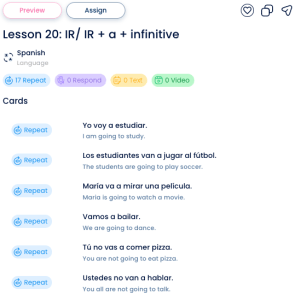As a Spanish learner, you might find yourself struggling with the future tense. It's understandable - the future tense is often considered one of the more difficult verb tenses to master in Spanish. But don't worry - there's an easier way to talk about future events in Spanish. By using the verb "ir" (to go) followed by an infinitive verb, you can easily express future actions and events without having to use the complex future tense.In this blog post, we'll explore the benefits of using "ir" instead of the future tense in Spanish. We'll provide you with a comprehensive guide on how to use "ir" correctly, including conjugation rules and examples of its usage. Additionally, we'll provide you with resources to practice and reinforce your knowledge of "ir" in Spanish.
One of the biggest advantages of using "ir" instead of the future tense is that it's much easier to use and understand. Rather than having to memorize complex conjugation rules for the future tense, you simply need to know the present tense conjugation of "ir" and add the infinitive form of the verb you want to use. This can save you a lot of time and effort in the long run.Another benefit of using "ir" is that it's a more natural way of expressing future events in Spanish. Native Spanish speakers often use "ir" in this way, so using it yourself can help you to sound more fluent and natural. Additionally, using "ir" can help you to avoid common errors and awkward phrasing that can occur when using the future tense.
To use "ir" in Spanish, simply conjugate it in the present tense and follow it with the infinitive form of the verb you want to use. For example:
As you can see, the conjugation of "ir" changes depending on the subject of the sentence. Here's the full conjugation of "ir" in the present tense:
It's important to note that the verb following "ir" should always be in the infinitive form, not the conjugated form.
Speakable.me is an AI-powered language learning tool that can generate speaking exercises to help you practice using "ir" in Spanish. To get started, create an account and type "using ir to say i will do something" in the AI bar.

You can also try these speaking activities for free!
